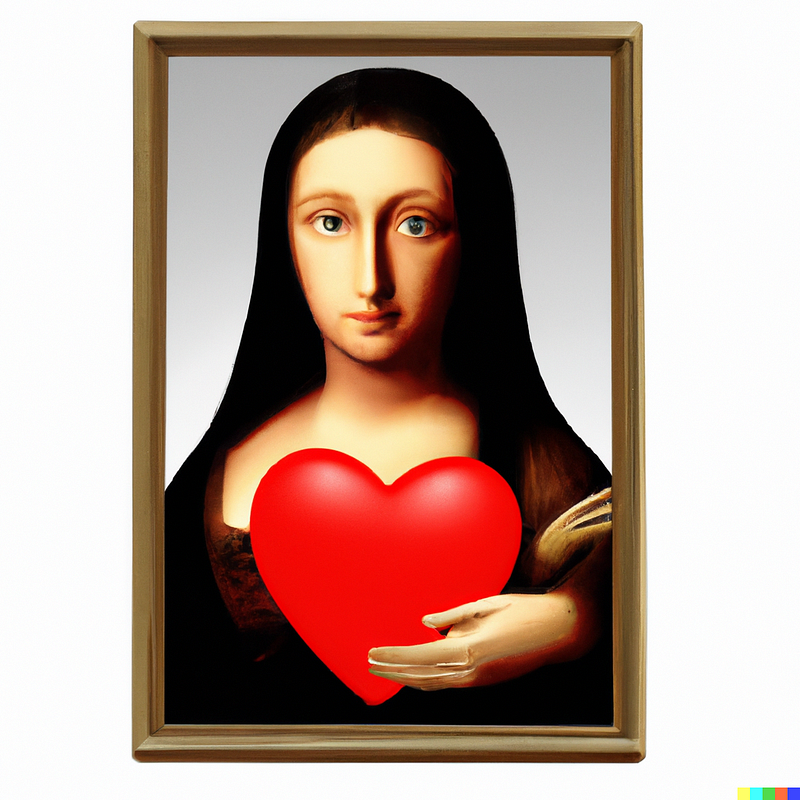The Artist’s Way Should Be Required Reading for Gender Dysphoria
How two simple tools can alleviate many troubles in our lives


As I work my way through Julia Cameron’s “The Artist’s Way,” I continue to wonder at the simplicity of the tools: Morning Pages and the Artist Date. I admit I was underwhelmed when I read about them. Write three pages in a journal every day. Take a rest once a week.
Is this not what I’ve done for almost 20 years? I began writing in a journal in 2005 — the first time I was involuntarily committed to a psychiatric ward. Every weekend I rest — I used to drink myself into oblivion; surely that was relaxing, right?
So why was I still feeling like hell?
In reading about the Artist’s Way tools, I felt like I’d seen a commercial for the “Bass-o-Matic.” Is it really just that easy? I was skeptical.
But I continued plugging my way through the process (as well as plugging the process itself through weekly articles about it), and after six weeks, I am convinced. There is magic in the tools that sparks wonder. It’s even better than the Bass-o-Matic!
Although I wrote in a journal, I did not truly purge my difficult thoughts. Although I stayed away from the office on weekends, I did not truly rest. The magic of the tools has to do both with consistency (write three pages every day) as well as intent (rest without a purpose).
Morning vs. evening pages
Writing in a journal is an immensely valuable practice, although there is a distinction between “write three pages every day in the morning” and “write in a journal when you get upset.”
In the past six weeks, I found writing in the morning more valuable than writing in the evening. At first, I thought it was due to fatigue, a desire to end the day. Now I’m beginning to see a deeper meaning.
No doubt, fatigue has a real effect on my writing. When I’m tired, I have less desire to engage with my thoughts — I’m looking for a bed, not a philosophical discussion. So I write to get it over with instead of as an exercise.
For instance, I recently struggled to finish writing Evening Pages, despite feeling I had a lot to write about after a long conversation with a friend I hadn’t seen in months. I really just wanted to move on and do something else.
Morning Pages — by contrast — are written in a more relaxed state. I have just woken up, but I also do not feel the effect of the day’s events weighing on me. Feeling lighter in the morning leads neatly to the deeper meaning.
When I write Evening Pages, I typically recount the events that occurred that day. When I write Morning Pages, however, I write about the meaning of the events of the previous day (if any).
I had at least one day to process the events — to sleep on them, as it were. The ability to digest what happened gives me better insight into my life. But that thought goes even one level deeper.
Uncovering our secret beliefs
When I’m writing about insights — the meaning of my life, not the history — I do more thorough purging. I already noted the seemingly arbitrary value of “three pages” to write.
By writing until you’re empty of daily concerns, you must find something else to write about. This is when latent thoughts — the thoughts you didn’t know you knew — must surface. I’m far more capable of purging thoughts (or developing them — I don’t just process pain) when I must write something — even filler.
The combination is where the power lies. I am rested, I digested the previous day’s events, I elide details that lead to less meaningful personal development, and I am committed to filling a particular amount of space.
I’m ready to grow. Morning Pages get you at an open time, with meaningful things to process, and the compulsion to do it.
In this state, thoughts flow. I find wisdom within that surprises me.
Going on dates with myself
Cameron originally described the value of the Artist Date as taking in other people’s art after emptying yourself through Morning Pages. I believe there is an aspect of “filling the glass” in the Artist Date, but the example she gives after her explanation is…well, not exactly exemplary.
I expected Cameron would recommend we go to a museum or another display of art. I visualized gazing at the Mona Lisa for two hours a week, being filled with Leonardo da Vinci’s spirit, unleashing my artist in a way da Vinci’s notebooks indicate he was able to.
Sure, the commute from Colorado to the Louvre would be a bitch, but I would become a creative, backward-writing genius — remembered centuries later for my contributions to epistemology, transgender theory, and purple paw-print promotion.
Cameron’s example, however, was a suggestion to buy gold stars at the Dollar Store to stick on my Morning Pages (when I did them) to make me smile. This activity feels slightly less of an artistic endeavor than I had expected.
So perhaps the value is something more than filling myself with inspiration? More than drinking from the Divine Well of Awen? More than having a chat with the Salmon of Wisdom as da Vinci sits at my feet, listening intently? It is simpler than I thought.
Cameron’s book is written to help us recover our “Inner Artist,” which has been locked away by our proclivity (or survival tactic, in some cases) to hold secret beliefs as well as official beliefs. Cameron writes that we stifle ourselves, we hide ourselves, and this is why we slowly die inside.
Learning to love myself
Cameron appeals to the “Inner Artist,” and I see such an obvious parallel to the transgender experience, I believe the book ought to be required reading with every diagnosis of gender dysphoria.
Because I see the transgender experience as only another specific implementation of developing identity within a society, our “Inner Artist” is simply…us. We need not want to be da Vinci to derive value from this book. We need only want to be whole — to be who we are.
The value of the Artist Date is simple: to force you — as we are forced to face our secret beliefs in Morning Pages — to learn to honor yourself and those secret beliefs. The Artist Date shows us explicitly that we have value in the Universe without being da Vinci.
The Artist Date is about learning to love who we are, not what we do, how we look, how much money we make, whether our parents loved us as children. No — we learn to love ourselves, both in spite of and because of our previous experiences.
To return to the transgender experience: a common theme I hear in our stories is low self-worth. The truth is low self-worth is a major problem for Western society — it enables and exacerbates toxic, solipsistic behavior exemplified by Elon Musk, Steve Jobs, and others.
The tools Cameron presents are simple: just go write…just go do something nice for yourself. This is advice your grandmother might give you — to be subsequently filed away and forgotten as something old people tell young people because they don’t understand life today.
But these tools truly unlock who we are. These tools truly unlock a method to address low self-worth. These tools unlock a way to rid ourselves of the toxic influences impinging on our lives.
These tools are precious.
Learn them, use them…and love yourself.




